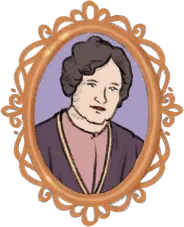Chapter 4 My Herbarium
I’m Preparing My Herbarium

The herbarium is an essential tool for understanding plants. For me, it was really helpful in choosing the right plants, flowers, and trees for my gardens. I learned a lot thanks to my herbariums.
- Step 11
Step 1
I pick the rose from the bush.
- Step 22
Step 2
I flatten the flower by placing it under a weight.
- Step 33
Step 3
I flatten the flower by placing it under a weight.
- Step 44Step 4
I attach my flower to my herbarium page using glue.
I identify the parts of the plant.

The herbarium is a fantastic reference tool for discovering plants. It helps us identify all the parts of a plant.
Rose
The rose is the flower of a shrub: the rosebush. It is known for its sweet fragrance and the vibrancy of its colour.
Sepal Usually green, the sepal protects the flower bud. It acts as a shield against spring frost, pests, and insect attacks.
Branch A twig is the smallest subdivision of a branch of a tree or shrub.
Thorn It is a sharp point that appears on certain plants to protect them from herbivores.
Leaf The leaf is an organ that allows plants to carry out photosynthesis, breathe, and transpire.
Petal A petal surrounds the reproductive system of flowers; its colours attract pollinators.
The Rose Garden
Rose bushes are my favourite shrubs! The scent of roses is intoxicating. I love it so much that I created a garden dedicated entirely to these flowers.
I have over 280 varieties of roses in this garden! That’s quite a lot, but I’m fortunate to have a wonderful team of gardeners who care for them. Thanks to their efforts, red, pink, and white roses bloom in succession throughout the season. This mosaic of colours is simply stunning.
The rose blooming period stretches from summer into early autumn. I’m lucky, as there are many rose species well-suited to the Canadian climate.
Today, my garden includes 2,500 rose plants. I’ve trained some to grow over arches, creating a truly magical atmosphere!